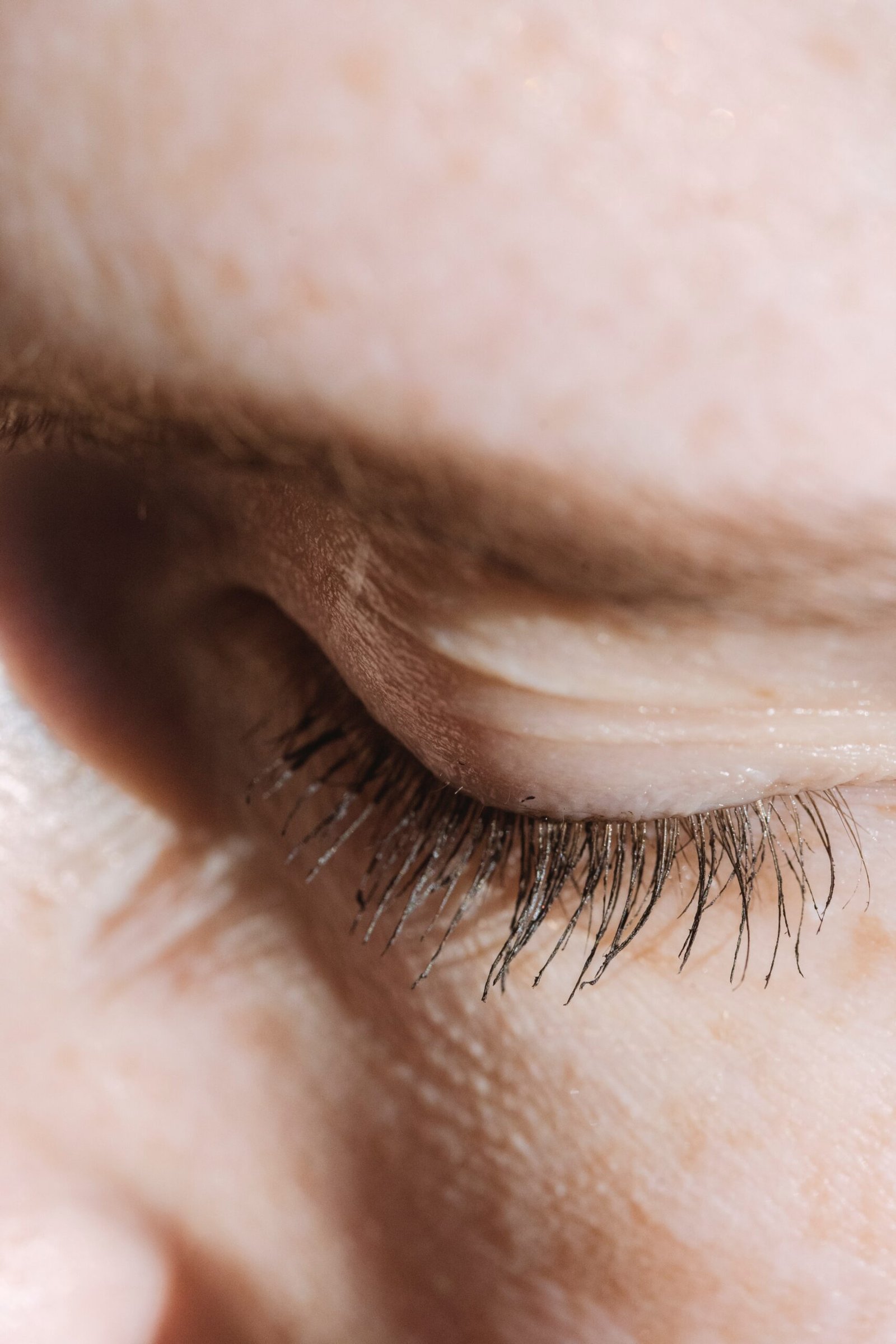Rapid Eye Movement (REM) sleep is an essential stage of a healthy sleep cycle and one that is particularly important for lucid dreamers.
It’s during REM sleep that the most vivid, narrative-like dreams occur – a phenomenon that lucid dreamers harness to consciously engage with their dreamscapes.
This article explains this complex, intriguing sleep stage, exploring not only its basic features but also its relevance to lucid dreaming, benefits, potential sleep disorders associated, techniques to enhance REM sleep, and more.
Already know what you are looking for? Skip ahead to one of the key sections:
Table of Contents
Understanding REM sleep1 can be enormously beneficial for lucid dreamers—providing them with the tools they need to achieve a lucid state more easily and frequently. By learning about the sleep cycle, correlating brain activity during REM sleep, the methods to induce lucid dreams, and techniques to enhance REM sleep, lucid dreamers can potentially improve their overall sleep quality, control their dream environment, and even better handle nightmares.
The Sleep Cycle
The sleep cycle is a progression through different stages of sleep that we experience multiple times each night.
Beginning with light sleep (Stage 1), you gradually fall into a deeper sleep (Stages 2 and 3), eventually entering REM sleep (Stage 4). After some time in REM sleep, the cycle restarts.
Most adults experience four or five complete sleep cycles in a single night.
The different sleep stages
When studying sleep, the different stages are classified based on certain criteria, such as the type of brain-waves emitted, and or the physiological characteristics.
The following table quickly describes each of the sleep stages found in hypnograms and other types of analysis of sleep.
| Sleep stage | Description |
|---|---|
| Wakefulness (W) | The individual is awake and alert, with eye movement and active brain activity. |
| N1 | Light sleep, characterized by theta brain waves. Easily awakened, and muscle activity decreases. |
| N2 | A deeper sleep stage featuring sleep spindles and K-complexes on the EEG. Heart rate and body temperature decrease. |
| N3 | Deep or slow-wave sleep with delta waves on EEG. This is the restorative stage of sleep, and it’s harder to wake from. |
| REM-sleep | Dreaming occurs during REM sleep. It’s characterized by rapid eye movements, increased brain activity, muscle atonia (paralysis), and vivid dreams. |
REM sleep plays a vital role in this cycle. It’s the stage responsible for vivid, narrative-like dreams, making it a critical aspect for those interested in lucid dreaming.
The first episode of REM sleep typically occurs about 90 minutes after falling asleep and might last as little as 10 minutes. As the night progresses, REM sleep periods increase in length, with final REM periods lasting up to an hour.
REM-sleep: More frequent later in the sleep cycle
As clearly shown in hypnograms (like the example one below) the frequency and length of the REM stage is highest 4-6 hours into the sleep cycle:
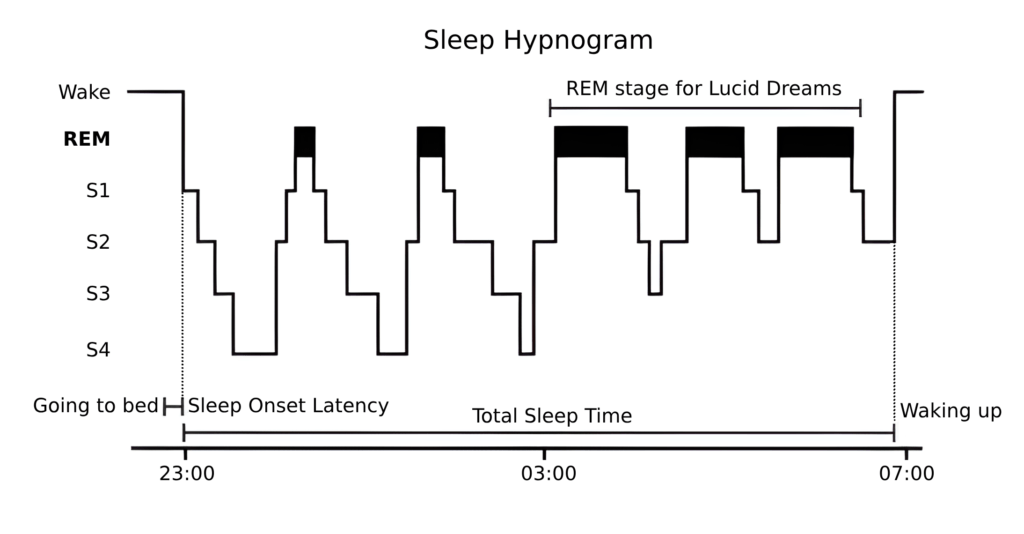
Our brains are highly active during REM sleep, almost to the same extent as when we’re awake.
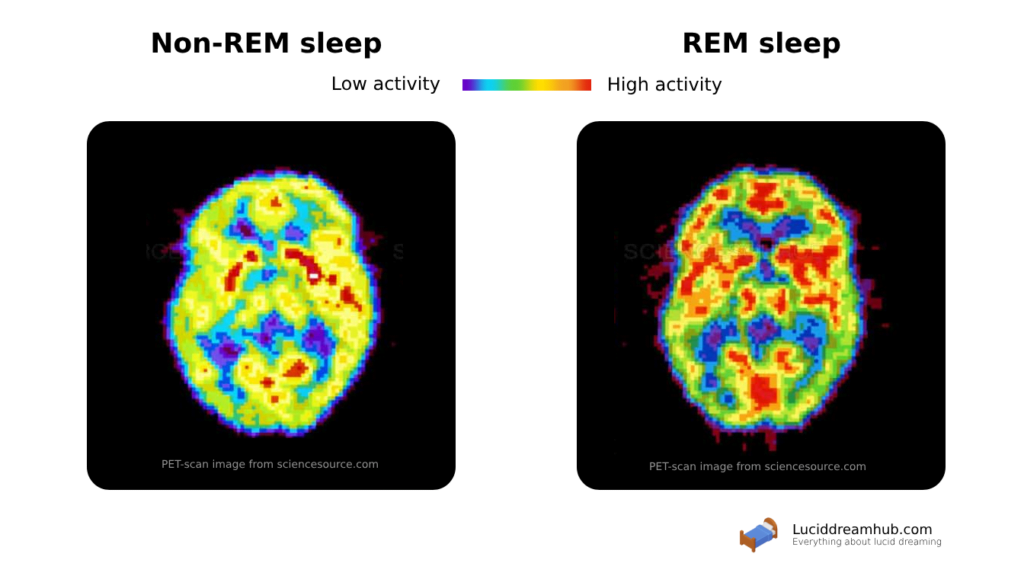
Interestingly, although eyes are closed, they move rapidly in various directions – hence the name ‘Rapid Eye Movement’ sleep. These eye movements are associated with dream imagery, making REM sleep a fascinating field of study for understanding not just dreams, but also the subconscious mind.
In the succeeding sections, we’ll take a closer look at the characteristics of REM sleep, the science of lucid dreaming, and how understanding REM sleep can possibly enhance your lucid dreaming experiences.
Characteristics of REM-Sleep
Some of the defining characteristics of REM sleep include rapid eye movement, muscle atonia (paralysis), and high brain activity. The chief characteristic, rapid eye movement, is what gives this sleep stage its name. When we are in REM sleep, though our bodies are effectively paralyzed, our eyes move quickly and unpredictably in a variety of directions.
This rapid eye movement is thought to be associated with the visual or sensory experiences we have during dreams, hence the importance of REM sleep in lucid dreaming experiences.
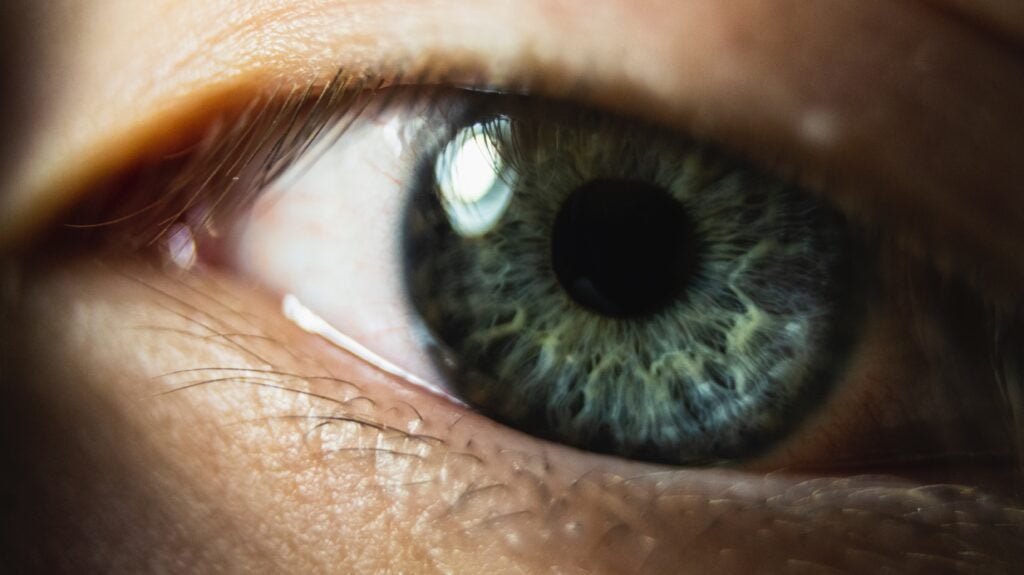
In addition to the movement of the eyes, another key characteristic of REM sleep is muscle atonia—an almost complete paralysis of the body. This temporary paralysis serves a protective function, preventing us from physical injury that could occur if we were to act out our dreams. For lucid dreamers, understanding and leveraging this paralysis can be highly benificial.
Lastly, brain activity during REM sleep is usually quite high. When we are in REM sleep, most of our dreaming happens due to our brain being as active as when we are awake. When this considerable brain activity is paired with the atonia, it creates a fascinating contrast, one where our body is almost entirely at rest, yet our mind is astoundingly active.
Lucid dreaming and REM-sleep
Lucid dreaming is defined as having the knowledge that you’re dreaming while you’re in a dream. The consciousness of the dream state can result in some control over one’s dreams, enabling dreamers to manipulate their dream environment, narrative, characters, and even the progression of their dreams in real-time.
The connection between REM-sleep and Lucid Dreaming
Most lucid dreams occur during the REM stage of the sleep cycle2, fitting in with the high brain activity and vivid narratives seen in REM sleep.
When people are lucid dreaming, they take advantage of these elements offered by REM sleep for a more satisfying dreaming experience, making an understanding of REM sleep essential for lucid dreamers or those looking to practice it.
Inducing lucid dreams during REM sleep involves several techniques. Some methods rely on applying cognitive practices that increase your self-awareness, such as reality checks and meditation. Other techniques involve the strategic manipulation of sleep patterns to provoke a state conducive to lucid dreams.
Beyond being a fascinating phenomena, lucid dreaming also has several potential benefits for personal growth, creativity, and improving sleep quality,
REM Sleep Disorders
Just like with other aspects of sleep, various disorders can affect REM sleep.
One common, and in most cases harmless, disorder is REM Sleep Behavior Disorder, in which the muscle paralysis (atonia) that usually occurs during REM sleep is incomplete or absent. This absence allows individuals to act out their dreams physically (sleepwalking) which can sometimes lead to injury or sleep disruption.
Another REM sleep disorder is Narcolepsy, a condition that can cause sudden bouts of sleep and excessive daytime sleepiness. In severe cases, it might involve episodes of cataplexy, sudden and uncontrollable muscle weakness, or paralysis during wakeful hours.
These disorders highlight the importance of healthy REM sleep not just for lucid dreamers but for everyone. They can significantly affect sleep quality and the ability to perform daily activities.
Techniques to Enhance REM Sleep
Optimizing one’s REM sleep improves the lucid dreaming experience, overall sleep quality, memory consolidation, and learning. Various factors from daily habits to specific practices and even some supplements can influence the quality and quantity of REM sleep.
Lifestyle choices

Lifestyle choices such as maintaining a consistent sleep schedule, keeping your sleep environment dark, and minimizing alcohol3 and caffeine intake can contribute to achieving more extended and uninterrupted REM sleep periods.
Additionally, getting exposure to natural light during the day can help regulate one’s internal sleep-wake cycle, potentially impacting REM sleep.
Mind-body practices

Mind-body practices like relaxation techniques (like PMR’s) and exercise are known to promote better sleep.4 This can help manage stress, a known enemy of good sleep, and subsequently increase chances of experiencing proper REM sleep.
Diet
Diet may influence sleep patterns too, including REM. Eating a balanced, nutrient-rich diet can support overall sleep health.

Specific foods rich in tryptophan, an amino acid that can help the body produce the sleep-regulating hormone melatonin, are particularly beneficial for promoting healthy sleep:5
- Milk – Whole Milk is an amazing source of tryptophan.
- Turkey and Chicken – Turkey, Chicken and other types of meat are all good sources of tryptophan.
- Oats – Prepared oatmeal is a healthy source of tryptophan.
Supplements
There are also various supplements and substances that some people use to support REM sleep.
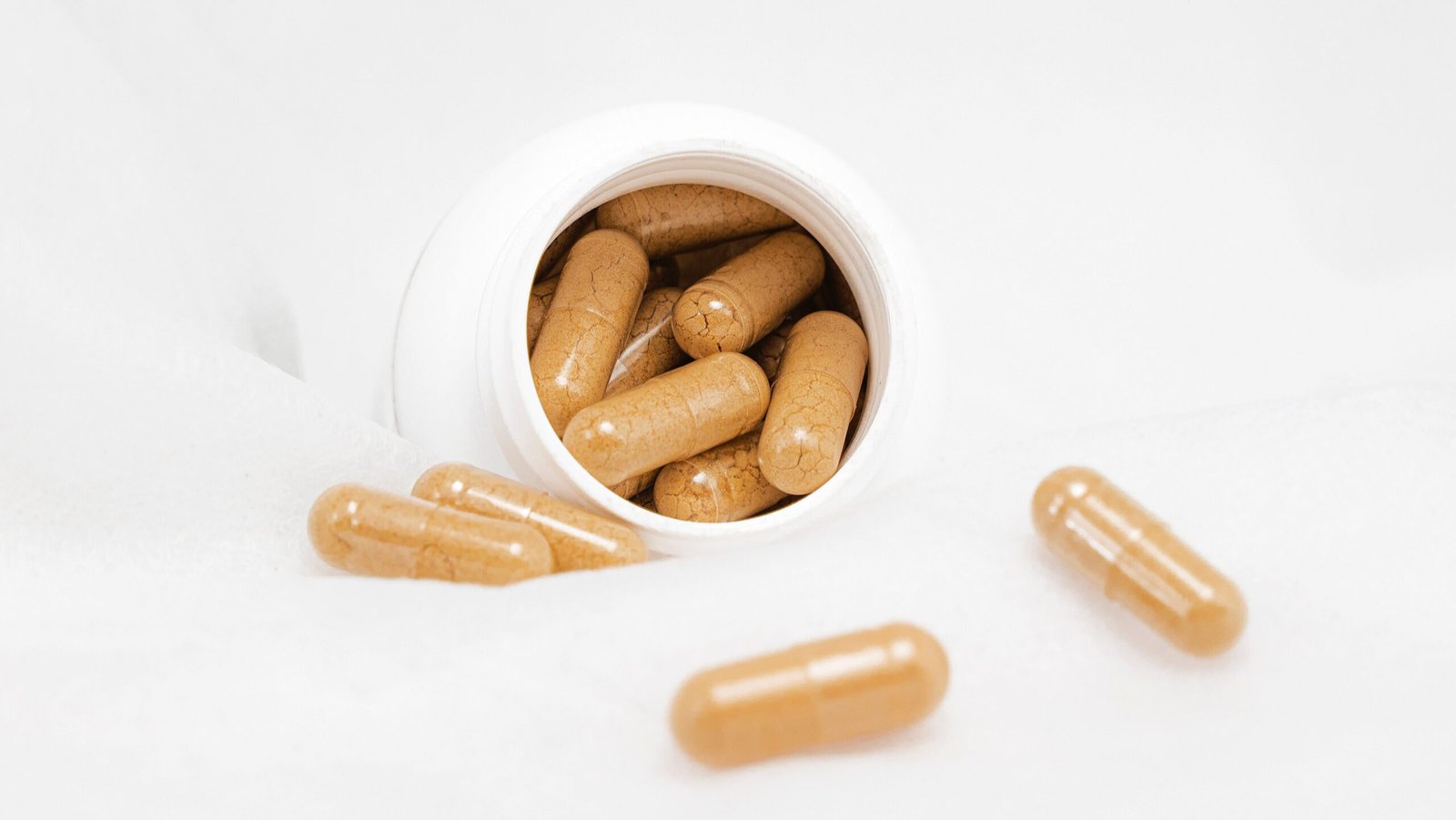
Although I’ve been unable verify that supplements offer any benefits over a healthy diet and lifestyle, some of the most frequently mentioned supplements include:
- Melatonin – A popular over-the-counter remedy that claims to improve sleep quality by helping individuals fall asleep faster and experience more REM sleep.
- Valerian root – A herbal supplement known for its potential to promote relaxation and alleviate mild insomnia.
- Magnesium – A dietary mineral often used as a supplement to support better sleep quality. It claims to help with relaxation and muscle function.
- Vitamin B6 – A vitamin that potentially enhances the duration and depth of REM sleep, leading to more restful and dream-rich sleep experiences.
It’s recommended to consult with a medical professional before starting any routine involving these, as reactions can vary individually.
Common questions about REM-sleep
Before we conclude, let’s recap some of the most common questions about this sleep stage, and its relation to dreaming:
The “REM” in REM sleep stands for “Rapid Eye Movement”. The name derives from a phenomenon that occurs during the sleep stage, where the eyes rapidly move around behind closed eyelids
REM sleep occurs throughout the entire sleep cycle, but more frequently and for longer periods towards the very end of your sleep.
It is during REM sleep that the most vivid and memorable dreams occur. Some claim that the rapid movement of the eyes that signify this stage are a reflection of what is happening in the dream
REM sleep typically accounts for 20-25% of our sleep, although this can vary due to factors such as diet, health and stress levels.
The first episode typically occurs about 90 minutes after falling asleep and might last as little as 10 minutes. As the night progresses, REM sleep periods increase in length, with final REM periods lasting up to an hour.
Conclusion
The relationship between REM sleep and lucid dreaming serves as a compelling point of investigation for those seeking to understand and navigate their subconscious realm. Whether you’re a seasoned lucid dreamer or just dipping your toes into this fascinating phenomenon, understanding the REM stage is an invaluable tool.
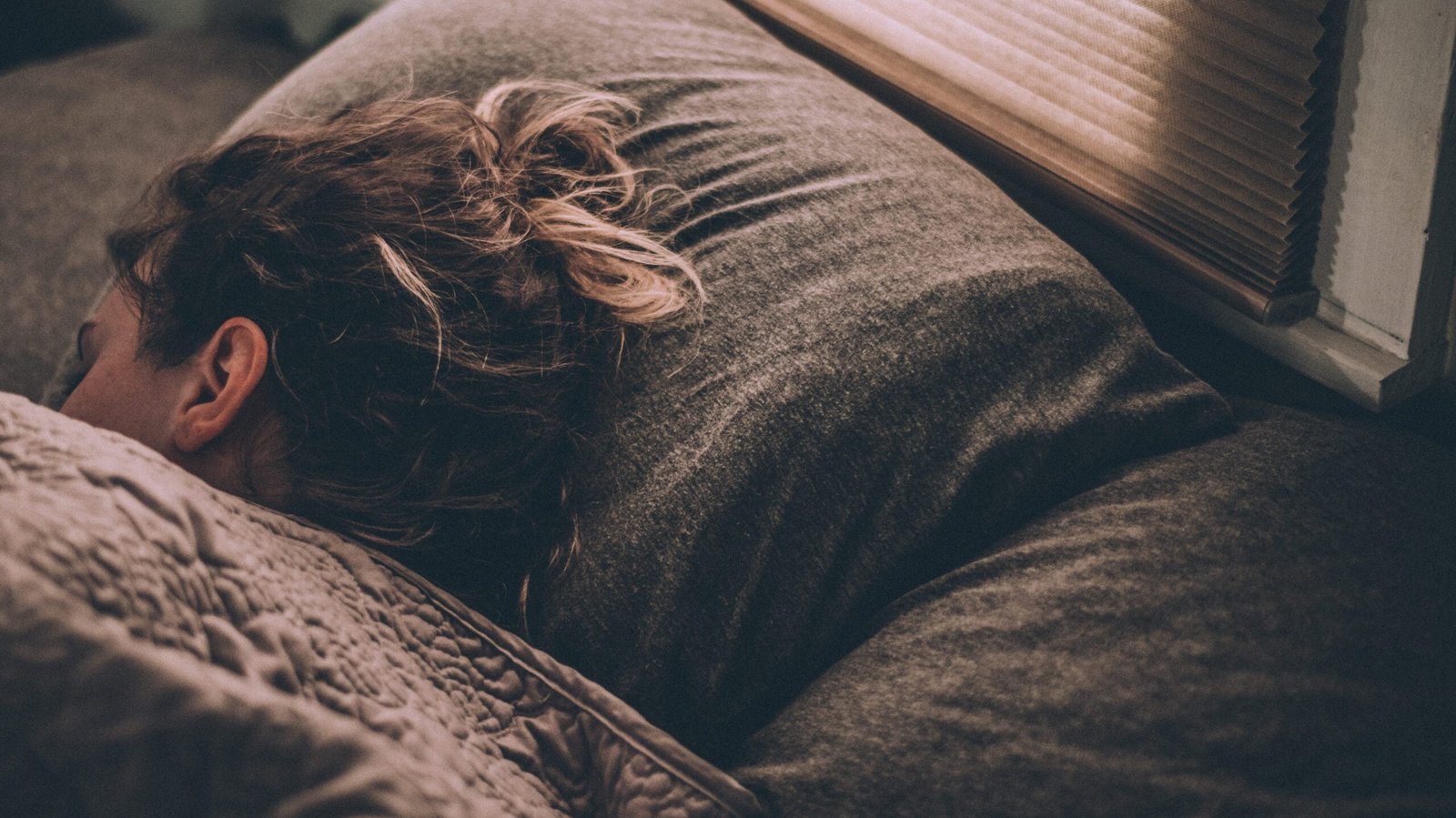
Remember, optimizing the quality of your REM sleep not only improves your sleep health overall but also expands the length and intensity of your dream world.
Practices such as maintaining regular sleep schedules, partaking in relaxation techniques, and following a balanced diet may considerably benefit your REM sleep and subsequently, your capacity for lucid dreaming.
Sources and additional reading
As you know by now, the topic of REM-sleep is deeply intertwined with dreaming, and lucid dreaming. If you came here looking to improve your lucid dreaming capabilities I recommend that you check out my Tips & Tricks and Q&A-posts, and the following articles in particular:
- Do certain foods or drinks influence lucid dreams? – An exploration of the specific foods and drinks that improve sleep and influence lucid dreaming.
- Five reserach studies about lucid dreaming you should check out – A summary of the Lucid Dreaming studies that I find most interesting.
- Creating a lucid dreaming routine – By establishing a routine, you can improve both consistency and quality of your lucid dreams.
Sources
- Peever, John, and Patrick M. Fuller. “The biology of REM sleep.” Current biology 27.22 (2017): R1237-R1248. ↩︎
- LaBerge, Stephen, Lynne Levitan, and William C. Dement. “Lucid dreaming: Physiological correlates of consciousness during REM sleep.” The journal of mind and behavior (1986): 251-258. ↩︎
- Neuendorf, Rachel, et al. “The effects of mind-body interventions on sleep quality: a systematic review.” Evidence-Based Complementary and Alternative Medicine 2015 (2015). ↩︎
- Park, Soon-Yeob, et al. “The effects of alcohol on quality of sleep.” Korean journal of family medicine 36.6 (2015): 294. ↩︎
- Silber, B. Y., and J. A. J. Schmitt. “Effects of tryptophan loading on human cognition, mood, and sleep.” Neuroscience & biobehavioral reviews 34.3 (2010): 387-407. ↩︎
